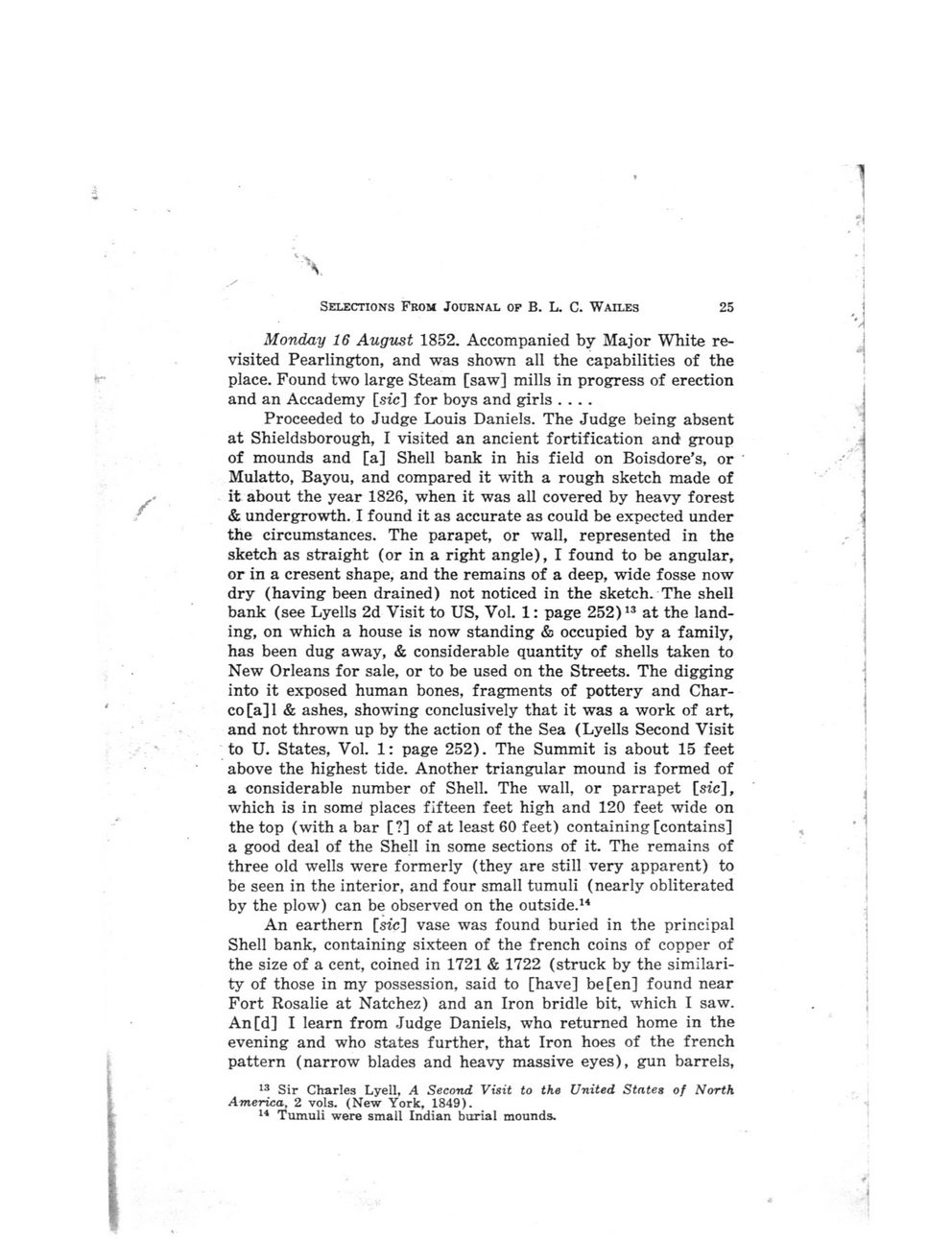This text was obtained via automated optical character recognition.
It has not been edited and may therefore contain several errors.
Selections From Journal op B. L. C. Wailes 25 Monday 16 August 1852. Accompanied by Major White revisited Pearlington, and was shown all the capabilities of the place. Found two large Steam [saw] mills in progress of erection and an Accademy [sic] for boys and girls .... Proceeded to Judge Louis Daniels. The Judge being absent at Shieldsborough, I visited an ancient fortification and group of mounds and [a] Shell bank in his field on Boisdore?s, or Mulatto, Bayou, and compared it with a rough sketch made of it about the year 1826, when it was all covered by heavy forest & undergrowth. I found it as accurate as could be expected under the circumstances. The parapet, or wall, represented in the sketch as straight (or in a right angle), I found to be angular, or in a cresent shape, and the remains of a deep, wide fosse now dry (having been drained) not noticed in the sketch. The shell bank (see Lyells 2d Visit to US, Vol. 1: page 252)13 at the landing, on which a house is now standing & occupied by a family, has been dug away, & considerable quantity of shells taken to New Orleans for sale, or to be used on the Streets. The digging into it exposed human bones, fragments of pottery and Char-co[a]l & ashes, showing conclusively that it was a work of art, and not thrown up by the action of the Sea (Lyells Second Visit to U. States, Vol. 1: page 252). The Summit is about 15 feet above the highest tide. Another triangular mound is formed of a considerable number of Shell. The wall, or parrapet [sic], which is in som^ places fifteen feet high and 120 feet wide on the top (with a bar [?] of at least 60 feet) containing [contains] a good deal of the Shell in some sections of it. The remains of three old wells were formerly (they are still very apparent) to be seen in the interior, and four small tumuli (nearly obliterated by the plow) can be observed on the outside.14 An earthern [sic] vase was found buried in the principal Shell bank, containing sixteen of the french coins of copper of the size of a cent, coined in 1721 & 1722 (struck by the similarity of those in my possession, said to [have] be[en] found near Fort Rosalie at Natchez) and an Iron bridle bit, which I saw. An[d] I learn from Judge Daniels, who returned home in the evening and who states further, that Iron hoes of the french pattern (narrow blades and heavy massive eyes), gun barrels, 13 Sir Charles Lyell, A Second Visit to the United States of North America, 2 vols. (New York, 1849). 14 Tumuli were small Indian burial mounds.

Claiborne, J.F.H Claiborne-J.F.H-065